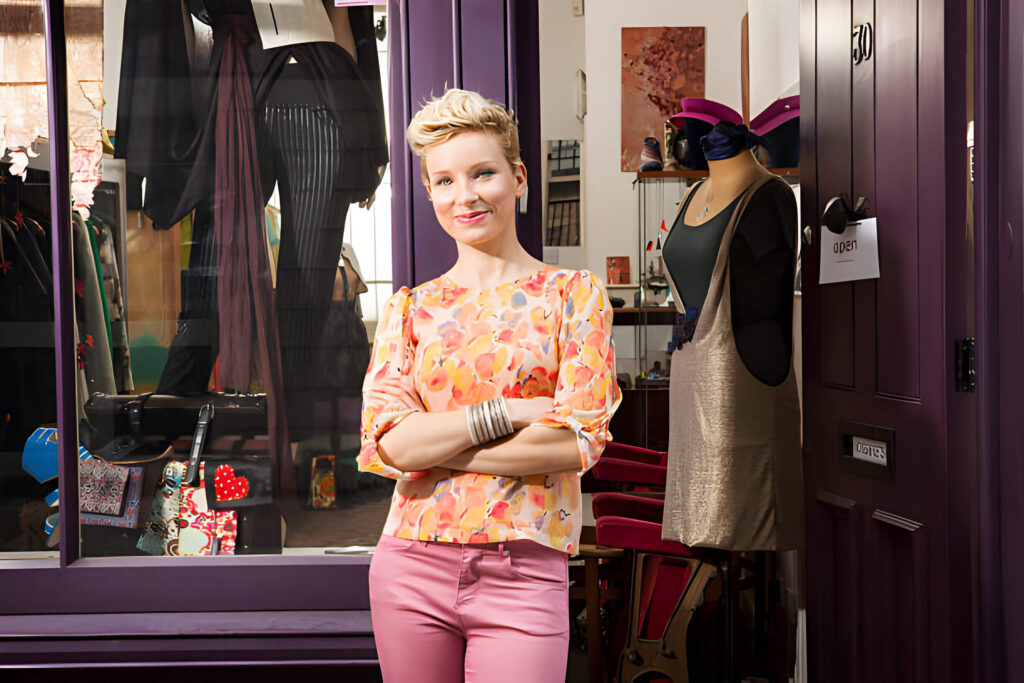The importance of fair trade in an ethical fashion cannot be overstated. Even though many of us are aware of the importance of sustainable practices, more awareness about ethical work practices is needed. In the fashion world, fair trade manufacturing of clothing makes sure our clothes are made in a kind, fair, and ethical manner. Keeping our planet and the people who make our clothes in good hands is more important than ever, and ethical fashion is the best way to do that. We’re going to explain ten awesome rules that keep clothing Fair Trade super ethical and great!
What Is Fair Trade Clothing?
Fairtrade clothing is like the “golden rule” of fashion, where everyone is treated fairly. Simply put, that means making clothes that are fair for the workers and good for the earth. This fashion superhero is different from regular clothing because it ensures that the people who sew, stitch, and make our clothes are well paid and work in safe conditions.
In addition, it is also a green giant, using eco-friendly measures to care for the planet and reduce harm. So, Fair Trade fashion not only helps people but also gives our beloved earth a big hug!

What Is Fair Trade Concerning Fast Fashion?
Fairtrade and fast fashion are two very different animals in the fashion jungle. Fast fashion is all about making lots of clothes super-fast, often for lower wages and less great conditions for workers. It’s like a fast-paced race where the environment can also take a hit.
On the other hand, fair trade fashions and clothing are like a wise and compassionate older brother, focusing on fairness for workers and being environmentally friendly. It takes a long time to build, but it’s a win-win because people are treated well, and the planet stays happy and healthy. So, fair trade is the slow and steady hero, while fast fashion is the fast crazy in the fashion story.
The 10 Essential Principles of Fair Trade Clothing
The World Fair Trade Organization (WFTO) has come up with ten principles of fair trade. These ten principles are key to keeping the fashion world fair and wonderful. These principles are super important in making sure our clothes are not just stylish but kind to people and the planet. Let’s dive into each one to see how they work their magic!
Principle 1 – Creating Opportunities for Economically Disadvantaged Producers
Fairtrade principles clothes start by creating opportunities for those who may not have many opportunities to earn a decent living. It’s like opening the doors for those who are most in need. There are places where Fair Trade supports women’s education and provides them with jobs and independence, such as those where sewing skills are taught to women.
Principle 2 – Transparency and Accountability
Honesty Fair Trade textiles are characterized by transparency and accountability. Whether it’s how clothes are made or how people are paid, they make sure everyone knows what’s going on behind the scenes. It’s similar to switching on a large and truthful spotlight!
Principle 3 – Fair Trading Practices
Having fair trade business clothing practices makes sure everyone plays by the rules. Playing this game is like playing a game with no cheating, and everyone follows the rules equally. By doing this, everyone is treated well, and everyone is happy.
Principle 4 – Payment of a Fair Price
Fairtrade Clothing guarantees that manufacturers will get a fair price for their hard work. Imagine getting paid what you deserve – that’s the magic of this principle. Paying people fairly can help improve their lives and communities. This principle looks at many aspects of fair price clothing, such as:
- Fair prices: There should be a reasonable profit included in prices negotiated for everyone’s benefit.
- Fair wages: Worker wages should be paid following the living wage in the area.
- Local living wage: A reasonable wage should be paid for no more than 48 hours of work per week in the region. Additionally, this wage should cover basic expenses such as food, water, and accommodation.
Principle 5 – Ensuring No Child or Forced Labor
Fair Trade clothing is a big “no” to child and forced labor. It’s like saying, “Kids should be in school, not factories!” Fair clothing production checks and makes sure no one is forced to work against their will.
In case that child labor turns up, the kids must be taken out of the workplace and given safe substitutes. These actions frequently involve enrolling the kids in school and providing parents or other family members who are of working age with alternate sources of income.
Principle 6 – Commitment to Non-Discrimination, Gender Equity, and Freedom of Association
Being fair to everyone, regardless of who they are or where they come from, is at the heart of this principle. It encourages equality and enables individuals to work together to improve problems.
There shall be no racial, caste, national origin, religion, handicap, gender, sexual orientation, union membership, political affiliation, HIV/Aids status, or age discrimination in employment, compensation, access to training, promotion, termination, or retirement.
Women are provided chances, full employment rights, full statutory benefits for employment, and equal pay for equal work as a result of the promotion of gender equality. The right of any employee to establish and join the trade union of their choosing is respected.
Principle 7 – Ensuring Good Working Conditions
Fair Trade ensures that workplaces are cozy, secure, and healthy for employees. They enjoy comfortable chairs, good breaks, and clean air, just as we would at work. It at least complies with municipal, state, and federal legislation as well as ILO treaties on health and safety.
So, when you wonder, “Is American Apparel Fair Trade?” – you can rest assured that their working hours and conditions for staff members and/or employees (as well as any homeworkers) are following ILO treaties and applicable municipal, state, and federal legislation. Happier workers produce better clothing!
Principle 8 – Providing Capacity Building
Fair trade organizations are like educators, and they help producers learn new skills and improve their businesses. Fairtrade organizations acquire the skills and abilities of employees or members.
Organizations that work directly with small producers undertake specific activities to help these professionals improve their business skills, productivity, and market access.
Principle 9 – Promoting Fair Trade
Promoting fair trade is like promoting a cool new game. Fair Trade Clothes needs fans like you to tell their friends and family why this is awesome. When more people buy Fair Trade, it’s a win-win for everyone!
Principle 10 – Respect for the Environment
Fair Trade clothing online is a sustainable choice because it conserves energy, employs green materials, and produces less waste. Companies that manufacture Fair Trade products make the most of locally sourced raw materials in their product lines wherever possible.
They employ energy-saving production techniques and when practical, renewable energy techniques to reduce greenhouse gas emissions. They work to reduce the environmental impact of their waste stream.
When possible, Fair Trade producers of agricultural commodities adopt organic or low-pesticide farming techniques to reduce their negative environmental effects.
Fair Trade buyers and importers prioritize buying products created from raw materials that come from responsibly managed sources and have the least negative environmental effects. Where possible, all organizations pack their products using recycled or easily biodegradable materials, and where shipping by sea is an option.

Importance of Fair Trade
For the majority of people worldwide, free market capitalism has brought about the biggest gains in quality of life in the history of civilization. Yet, this amazing engine of innovation may be dangerous if it isn’t properly managed.
While having access to low-cost cotton products is fantastic for individuals in the US or Canada, this value decreases if cotton growers in China or India do not receive adequate remuneration that supports sustainable lives.
The use of natural fibers and low-impact dyes are ideal fair trade factory practices that worldwide textile makers would adopt without any outside assistance. Still, the profit-at-any-cost business paradigm is inherently hostile to ethical control.
By incorporating ethical trade principles into the global market and enabling consumers to invest in a trend that will slowly guide the international textile trade toward practices that help every contributor to the supply chain, it is essential to influence the global textile industry to switch to sustainable practices.
What Is The Difference Between Fair Trade and Fairtrade?

Fair Trade
The phrase “fair trade” (which consists of two words) or “fairly traded” refers to a wide range of concepts, including ethical trade, the fair trade movement, and fair trade goods. Contrary to “organic,” “fair trade” is not a phrase that is legally protected; therefore, any business can call their products fair trade even if they are not.
Some businesses make “fair trade” claims without having the same independent third-party certification that Fairtrade has or without being a part of the WFTO network.
Fairtrade
Only companies, brands, and goods that are members of the Fairtrade International system use the term “Fairtrade” in its entirety. We are an international network of more than 2 million farmers and laborers from the Global South who operate in nearly 80 nations. On a product’s packaging, look for the blue and green Fairtrade Mark to identify it.
The Challenges of Regulating Fair Trade Clothing

The design of fair trade clothing presents challenges and legitimate criticism. Some critics say formal business clothing can be expensive, putting it out of reach for all consumers. There are also concerns about the size of fair markets compared to traditional fashion, making it harder for fair trade clothing manufacturers to sell their products.
Some challenges include ensuring that Fair Trade principles are followed in every step of the supply chain, which can be complex, and monitoring compliance across different regions and cultures. Another concern is how to find clothing manufacturers who follow fair trade manufacturing principles.
However, fair trade organizations are actively addressing these challenges. They are working to expand their market through partnerships with major brands and retailers and to make business-quality clothing more accessible and affordable.
In addition to conducting regular audits and training manufacturers to ensure compliance with Fairtrade fashion principles, these organizations build strong relationships between manufacturers and consumers, and they raise awareness and support fair trade clothes. It’s an ongoing journey to overcome challenges. Still, fair trade organizations are committed to making ethical fashion the norm rather than the exception.
The Final Thread
So, for the question most frequently asked “How does Fairtrade work”, Fair Trade in fashion is all about being good for people and our planet. It follows ten essential principles that ensure fair wages, transparency, good working conditions, and a big “no” to child labor, to name a few.
In today’s world, where it’s so important to be kind to others and the earth, ethical fashion is like our superhero costumes. So, let’s also be fashion heroes by choosing the right clothes and making informed choices. It’s as simple as choosing clothes that make the world a better place, one beautiful step!
Ready to make a difference with your style? Explore the world of Fair Trade clothing while branding your clothing line, and find affordable costs of clothing manufacturers today!”







